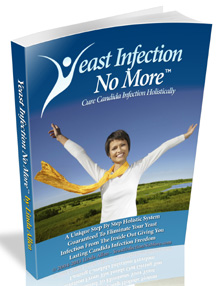Yeast Infection: A Preventable Nuisance
Free Video Reveals 1 Weird Tip To Quickly Cure Your Candida Overgrowth & Enjoy Permanent Freedom From Yeast Infections In As Little As 12 Hours - Guaranteed!
>> Yeast Infection Guaranteed Treatment Click Here <<
Yeast Infections are caused by the Candida albicans fungus. This tiny yeast organism is found naturally on the skin and within the vagina and is usually kept in check by the normal acidic level .
When the acidic balance of the vagina is upset, it allows for the growth of these yeast organisms, to the point where an infection occurs. This in turn leads to the common symptoms of a yeast infection, including itching, burning, pain during sexual intercourse, vaginal discharge and swelling.
The acidic balance in the vagina can be upset by such things as menstruation, pregnancy, birth control pills, antibiotics, diabetes and steroids. Other contributers include irritation and moisture.
It is estimated that 3/4 of all women will experience at least one infection, while up to half will experience multiple infections. Infections in some women can become almost chronic. Yeast infections can also be transmitted sexually to men.
With the widespread use of over-the-counter anti-fungal medications, there are now strains of this infection which are becoming more resistant and harder to treat. Therefore it is important for women who are prone to chronic infections to look at prevention and natural remedies as an alternative to over-the-counter remedies. http://tinyurl.com/y6dqn3
8 Ways you can prevent recurring yeast infection:
1). Antibiotics are a major cause of yeast infections, as they kill healthy bacteria along with the target bacteria. In this case the yeast infection may end up being a necessary evil. However, you can avoid products, such as anti-bacterial deoderant soaps, for example.
2). Avoid chemicals such as, dyes, inks and perfume. If you find that you seem to be sensitive, try using non-colored, non- perfumed toilet paper for example. Watch what fabric softners and detergents you are using. Any of these products can affect your body chemistry.
3). Clothing - avoid non-cotton, tight fitting clothing, for example, which tends to trap heat and moisture. Heat and moisture are a recipe for infection.
4). Condoms - nonoxynol-9, a lubricant used with some condoms has been linked to yeast infections, as have latex allergies.
5). Poorly controlled diabetes has been linked to yeast infections in some women. If you are diabetic - get it under control!
6). Sexual transmission of yeast infections is common. Use safe sex practices.
7). Hormonal changes due to such things as pregnancy, birth control medication, menstration and steroid use. In this case the infection should be recognized and treated, even though prevention may not always be feasible.
8). Avoid injury to the vaginal membrane caused by friction. Make sure that lubrication is sufficient to prevent harm and use care in selecting artificial lubricants.
The author enjoys writing about natural health and wellness products, as well as disease prevention. Please visit this site, if you have further questions on the topic of natural treatment for yeast infections. http://tinyurl.com/y6dqn3
Labels: condition_infection_more_symptom_yeast, home_treatment_for_yeast_infection, natural_cure_for_yeast_infection, treating_yeast_infection, yeast_infection_picture

